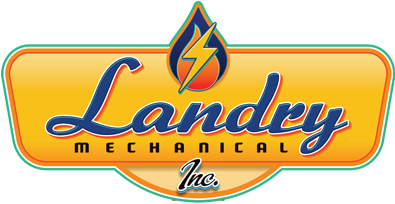You’re sitting in your home, enjoying a cool breeze on a hot day, when all of the sudden you realize that your air conditioner isn’t working. Suddenly, the weather that was so pleasant just minutes ago has turned into an uncomfortable heat wave. What’s going on? There’s a good chance that your AC unit is freezing up.
So, how do you address this problem? Let’s first take a look at some of the reasons why your AC unit might be freezing up, and then we’ll explore some potential solutions.
Poor Airflow
Air conditioners rely on proper airflow to function properly. When airflow is restricted, it causes the evaporator coils to freeze up. This can happen for a number of reasons, such as dirty filters, closed vents, or a blocked compressor.
As the coils freeze, they become less effective at cooling the air, which can lead to a vicious cycle of poor airflow and frozen coils. In extreme cases, an AC unit may completely shut down in order to prevent damage.
If you notice that your AC unit is freezing up, it’s important to take action to improve the airflow. This may involve replacing dirty filters, cleaning vents, or calling a professional to check for other potential problems.
Low Refrigerant Levels
AC units rely on a closed loop of refrigerant to absorb heat from the air inside your home and release it outside. This process relies on precise levels of refrigerant. If there is too little, the AC will struggle to remove enough heat to keep your home comfortable. If there is too much, it can cause the unit to freeze up.
Low refrigerant levels are often the result of a leak in the AC unit. If you notice that your AC is not cooling as well as it used to, or if it seems to be running more than normal there is a chance that it is leaking refrigerant. A professional HVAC technician will be able to check your refrigerant levels and repair any leaks in your system.
Faulty Blower Fan
If your AC unit is freezing up, it could be because of a faulty blower fan. The blower fan is responsible for circulating air around the evaporator coils. If the blower fan isn’t working properly, the air can’t circulate and the coils can start to ice up.
In some cases, the ice can build up so much that it completely blocks the airflow and causes the AC unit to shut down. If you suspect that your AC unit is freezing up because of a faulty blower fan, you should contact our qualified technicians for a professional diagnosis and repair.
Depending on the extent of the damage, our technicians may simply need to clean or replace the blower fan. However, in more severe cases, they may need to replace the entire AC unit.
Clogged Condensate Drain Line
The condensate drain line is responsible for removing the moisture that collects on the evaporator coils. When the line becomes clogged, the water has nowhere to go and eventually freezes, causing the coils to ice over. This can lead to a number of problems, including reduced airflow and poor cooling performance.
In severe cases, it can even cause the compressor to fail. If you suspect that your condensate drain line is clogged, it’s important to have it cleaned out as soon as possible to avoid any further damage to your AC unit.
What Are the Dangers of a Frozen AC Unit?
Aside from being uncomfortable, a frozen AC unit can cause a number of other problems in your home.
Poor Cooling Performance
The most obvious problem with a frozen AC unit is that it can’t effectively cool your home. As the coils ice over, they become less effective at removing heat from the air. This can lead to your home feeling stuffy and uncomfortable.
High Energy Bills
As your AC unit struggles to cool your home, it will have to work harder and use more energy. This can lead to a significant increase in your energy bills.
Compressor Failure
In extreme cases, a frozen AC unit can cause the compressor to fail. The compressor is responsible for circulating the refrigerant through the system. When it fails, the AC unit will be unable to cool your home.
Water Damage
If the condensate drain line becomes clogged, it can cause water to back up and overflow into your home. This can lead to water damage to your walls, ceiling, and flooring.
How Can I Prevent My AC Unit From Freezing Up?
There are a few things you can do to help prevent your AC unit from freezing up.
Check the Air Filters
Air filters help to circulate air and remove airborne contaminants, but they can also become clogged over time. When this happens, the airflow to your AC unit is restricted, causing the coils to freeze. By checking and replacing your air filters on a regular basis, you can help keep your AC unit running smoothly.
Experts recommend changing your air filter at least once every three months. The frequency with which you need to replace your air filter will depend on the type of air filter you have and the environment in which you live. If you have pets or live in a dusty area, you may need to replace your air filter more often.
Hire Professionals for Maintenance
One of the best ways to prevent your AC unit from freezing up is to have it professionally serviced on a regular basis. HVAC technicians will be able to check for any potential problems and make sure that your system is running smoothly.
The main advantage of having your AC unit serviced is that it can help you avoid costly repairs in the future. Pros will catch any potential problems before they become major issues.
If you need services such as AC installation, AC repair, and ductless air conditioning in Sutton, MA, Landry Mechanical Inc Plumbing HVAC & Electric will help you keep your AC unit running smoothly all summer long.
Install a Programmable Thermostat
By setting the thermostat to a higher temperature, the AC unit will run less often and will have a chance to defrost any ice that has built up. In addition, a programmable thermostat can help to even out temperature fluctuations, which can further reduce the risk of freezing.
Unclog the Condensate Drain Line
To unclog the condensate drain line, start by pouring a cup of bleach down the drain. Then, use a wet/dry vacuum to suck up any standing water. Next, flush the line with clean water. Finally, use a brush to scrub away any remaining debris.
Upgrade Your AC Unit
If your AC unit is more than 15 years old, it may be time for an upgrade. Newer AC units are more energy efficient and can cool your home more effectively. They are also less likely to develop problems, such as freezing up.
Call a Professional
If your AC unit has frozen, you’ll need to schedule a repair with a qualified technician. Landry Mechanical Inc Plumbing HVAC & Electric has been helping customers with their AC units for over 10 years. Our team of highly trained technicians is available 24/7 to provide emergency AC repair services.
Contact Landry Mechanical Inc Plumbing HVAC & Electric today to schedule a consultation. We provide heating, cooling, plumbing, and electrical services to Sutton residents.


